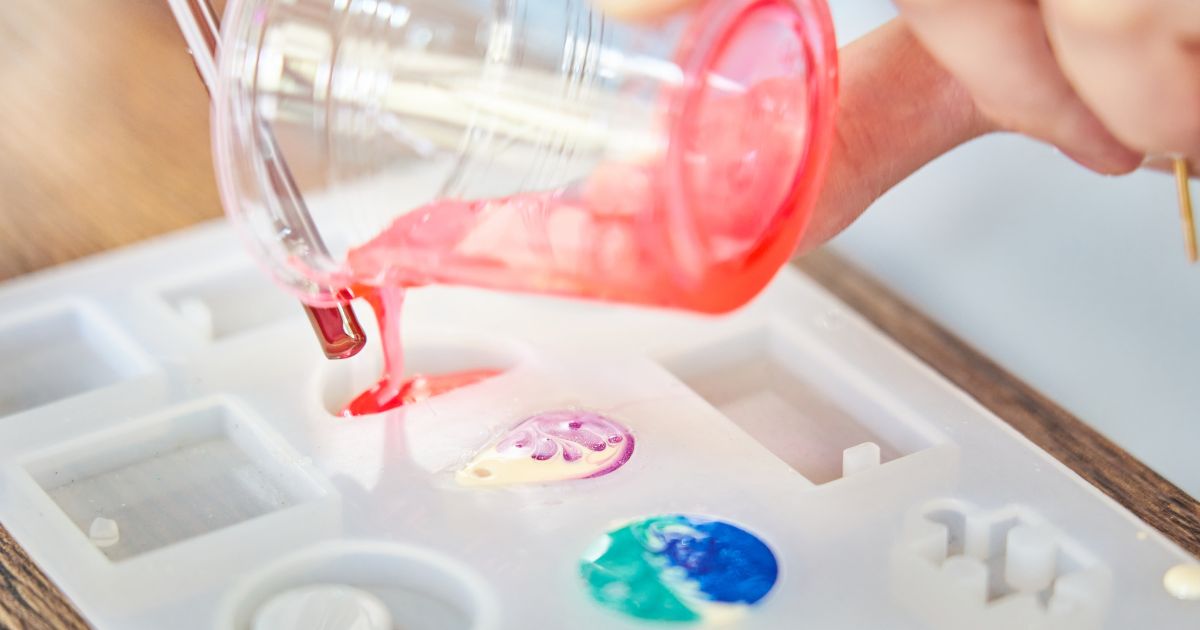
Epoxy Resins: A Comprehensive Guide on Varieties and Applications
Epoxy resin is a thermosetting material that solidifies when mixed with a curing agent. It is a versatile substance widely used in the fields of crafts, repair, and construction. This guide explores the various types of epoxy resin available and their specific applications.
Types of Epoxy Resin
Low-Viscosity Epoxy Resin: This form is known for its fluid consistency, making it perfect for filling small cracks and crevices. Its easy application and deep penetration capabilities make it a preferred choice for complex repair jobs.
High-Viscosity Epoxy Resin: In contrast to its low-viscosity counterpart, this version is thicker, making it ideal for filling larger gaps or shaping plastic components. Its denser consistency allows for more controlled application, especially when the resin needs to stay in place.
Low-Exothermic Epoxy Resin: Exothermic refers to the heat generated during the curing process. This type emits less heat due to its slower chemical reaction, making it suitable for heat-sensitive applications, such as in electronics.
High-Exothermic Epoxy Resin: This version shows a faster chemical reaction and, consequently, generates more heat. This makes it suitable for applications requiring quick curing or where heat is beneficial.
Clear Epoxy Resin: This is the go-to option when a transparent, crystal-clear finish is desired. It is often used to seal translucent surfaces or to create transparent plastic parts.
Colored Epoxy Resin: This colorful variant allows for customized and vibrant projects. It’s perfect for adding a splash of color to artworks or sealing colored surfaces.
Flexible Epoxy Resin: Unlike standard epoxy resins, this variant retains some flexibility once cured. This quality makes it suitable for applications requiring some elasticity, such as flexible plastic parts or flexible repairs.
Your choice of epoxy resin will depend on the specific needs of your project. Understanding the distinct properties of each type will help you make informed decisions for successful outcomes.
Safety When Working with Epoxy Resins
Remember to follow safety precautions when handling epoxy resins, as they often involve chemical compounds that can irritate the skin and eyes. Work in a well-ventilated space, use protective gear like gloves and safety glasses, and follow the manufacturer’s guidelines for safe handling.
Comparing Durability and Hardness: Epoxy Resin vs. Exposi Resin
Epoxy and exposi resins differ notably in terms of hardness and durability.
Epoxy Resin:
Hardness: Generally harder, making it resistant to scratches and wear.
Durability: Known for its chemical resistance and long-lasting performance, epoxy is suitable for demanding applications like industrial floor coatings.
Exposi Resin:
Hardness: This resin is usually softer, more prone to scratches, and wears out more quickly.
Durability: Exposi is less robust in high-performance environments and with chemical exposure, making it more suitable for lighter or temporary projects.
Choosing between these resins will depend on the project’s requirements and desired levels of durability and hardness.
Applications and Techniques of Epoxy Resin
After selecting the appropriate type of epoxy resin, it’s time to consider its multiple applications. Whether you’re a craftsman, an artist, or a DIY enthusiast, epoxy resin can meet your diverse needs in various ways.
Craft and Art Projects: Use low-viscosity epoxy resin to create intricate pieces of jewelry, or opt for colored epoxy resin for vibrant and eye-catching art projects.
Home Repairs: To fix broken items or seal cracks, a high-viscosity epoxy resin will provide a stronger bond, ensuring longevity and durability.
Construction and Industrial Use: High-exothermic and durable epoxy resins are often used to bond materials in construction projects or as high-performance coatings in industrial environments.
Electronics: For sensitive electronic components that require protection against heat and environmental factors, low-exothermic epoxy resin is usually the preferred choice.
Safety Protocols for Using Epoxy Resin
Before diving into your projects, remember that epoxy resins are chemical compounds that require careful handling. Here are some safety tips to follow:
Ventilation: Ensure that your workspace is well-ventilated, preferably with an exhaust fan to help disperse fumes.
Protective Gear: Always use the appropriate protective gear, including safety glasses, gloves, and a mask to protect yourself from fumes and skin contact.
Manufacturer Guidelines: Always read the manufacturer’s guidelines for the specific epoxy resin you’re using. These guidelines provide invaluable information on curing times, temperature, and other specific details you need to know.
Waste Disposal: Dispose of epoxy resin waste responsibly. Research hazardous waste disposal guidelines in your locality.
Choosing Between Epoxy Resin and Exposi Resin
When considering different types of resins, epoxy and exposi resins are often compared. These two have distinct characteristics:
Epoxy Resin:
Hardness: Known for its high surface hardness, epoxy resin is very resistant to scratches and dents.
Durability: Epoxy resin offers robust chemical resistance, making it ideal for industrial applications.
Exposi Resin:
Hardness: Generally softer than epoxy, exposi resin is more susceptible to surface damage.
Durability: Exposi resin is generally not as durable and resistant to chemical exposure, making it more suitable for lighter or temporary projects.
Your project requirements will determine which type of resin is most suitable. For demanding applications requiring high durability, epoxy resin is your primary choice. For less stringent projects where extreme durability is not a priority, exposi resin may be more appropriate.
Summary: Unleashing the Power of Epoxy Resins
Epoxy resin is a multipurpose material that is flexible enough to adapt to a myriad of applications, from arts and crafts to home repairs and industrial solutions. Knowing the different types of epoxy resins, along with understanding their unique characteristics, allows you to make an informed choice tailored to your project. Always prioritize safety by adhering to guidelines and taking necessary precautions. This ensures not only the success of your project but also your well-being.
Now, you are equipped with the knowledge you need to venture into the fascinating world of epoxy resins, taking your projects to new heights.
You may be interested to view: How to make Beads with Hot Glue
Don’t forget to follow us in our Instagram , YouTube Channel and Facebook Group !!!!
DIY Tutoriales y mucho mas articipates in the Amazon Services LLC Associates Program, an affiliate advertising program designed to provide us with a means to earn money through links to Amazon.com and affiliated sites.
This post contains affiliate links and I may be compensated for this post. Read our disclosure policy HERE

Leave a Reply